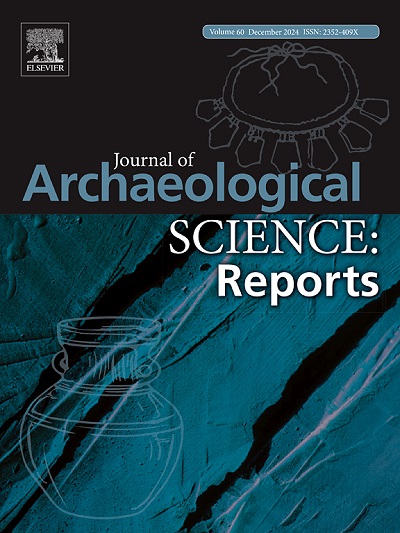Testing the effect of circumscription on the evolution of social complexity in the Valley of Oaxaca, Mexico, using agent-based models
IF 1.5
2区 历史学
0 ARCHAEOLOGY
引用次数: 0
Abstract
The initial emergence of complex societies in the archaeological record has often been explained by cultural and environmental conditions. In this paper, we formally test whether the conditions of the highly circumscribed region of the Valley of Oaxaca in highland Mexico could have intensified the formation of social complexity. The Valley of Oaxaca shows some of the earliest evidence for territorial expansion and multiple levels of internal organisation, or social complexity, in Mesoamerica and is considered a classic example of the effects of environmental circumscription. We build on our previous abstract agent-based model (Williams and Mesoudi, 2024) by incorporating real-world archaeological and environmental data from the Valley of Oaxaca to explore social complexity formation and test the impact of factors for which there is little archaeological evidence. The model results suggest that the mountainous surroundings of the valley could have contributed to social complexity formation, if we assume warfare was present throughout the time periods. However, the model also suggests that observed differences in social complexity formation between the three subvalleys of the Valley of Oaxaca were unlikely to be due to differences in circumscribing conditions. The model highlights key forms of archaeological evidence that might confirm or reject the effect of geographical circumscription in the Valley of Oaxaca.
使用基于主体的模型测试墨西哥瓦哈卡山谷限制对社会复杂性演变的影响
在考古记录中,复杂社会的最初出现通常用文化和环境条件来解释。在本文中,我们正式检验了墨西哥高地瓦哈卡山谷高度受限制地区的条件是否加剧了社会复杂性的形成。瓦哈卡山谷展示了中美洲最早的领土扩张和多层次内部组织或社会复杂性的证据,被认为是环境限制影响的典型例子。我们在之前抽象的基于主体的模型(Williams和Mesoudi, 2024)的基础上,结合来自瓦哈卡谷的真实世界考古和环境数据,探索社会复杂性的形成,并测试考古证据很少的因素的影响。模型结果表明,如果我们假设战争贯穿整个时期,那么山谷的多山环境可能有助于社会复杂性的形成。然而,该模型还表明,观察到的瓦哈卡山谷三个子谷之间社会复杂性形成的差异不太可能是由于限制条件的差异。该模型突出了考古证据的关键形式,这些证据可能会证实或拒绝瓦哈卡山谷地理界限的影响。
本文章由计算机程序翻译,如有差异,请以英文原文为准。
求助全文
约1分钟内获得全文
求助全文
来源期刊

Journal of Archaeological Science-Reports
ARCHAEOLOGY-
CiteScore
3.10
自引率
12.50%
发文量
405
期刊介绍:
Journal of Archaeological Science: Reports is aimed at archaeologists and scientists engaged with the application of scientific techniques and methodologies to all areas of archaeology. The journal focuses on the results of the application of scientific methods to archaeological problems and debates. It will provide a forum for reviews and scientific debate of issues in scientific archaeology and their impact in the wider subject. Journal of Archaeological Science: Reports will publish papers of excellent archaeological science, with regional or wider interest. This will include case studies, reviews and short papers where an established scientific technique sheds light on archaeological questions and debates.
 求助内容:
求助内容: 应助结果提醒方式:
应助结果提醒方式:


